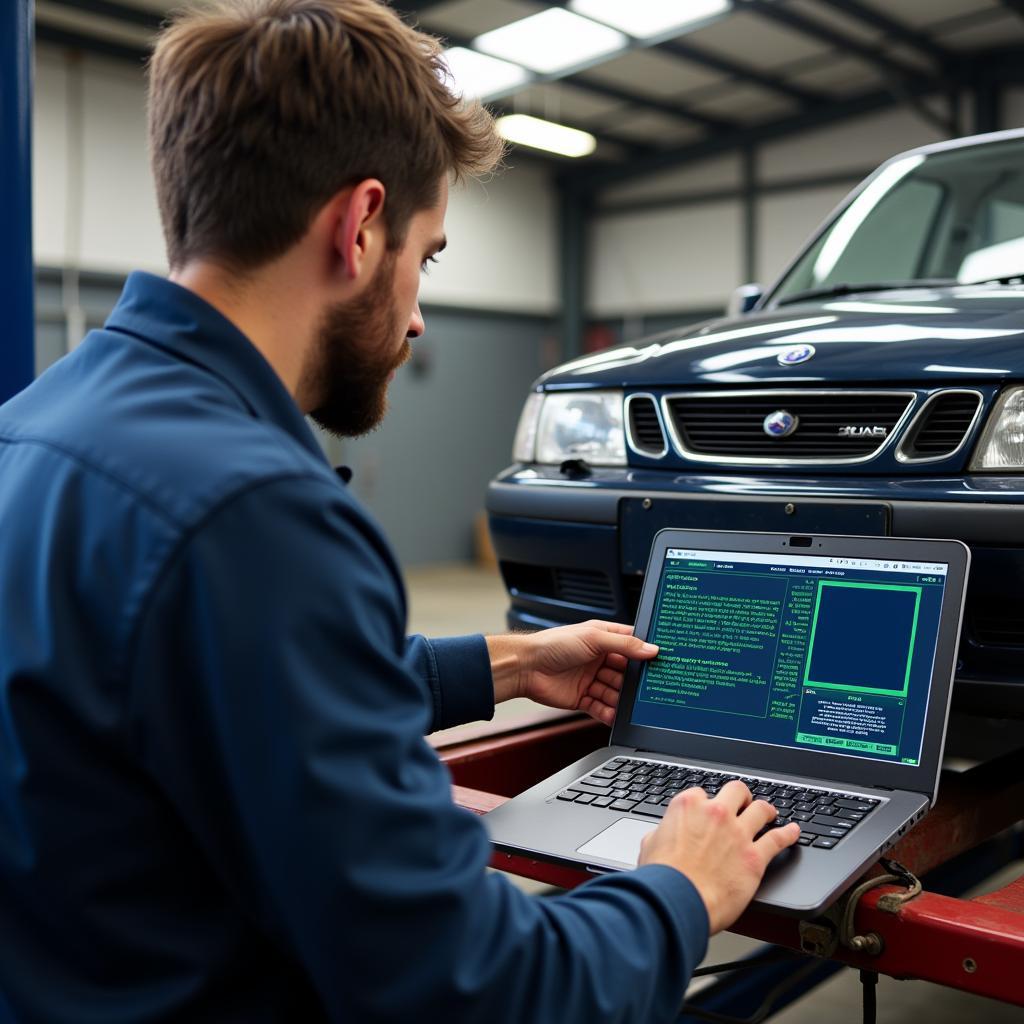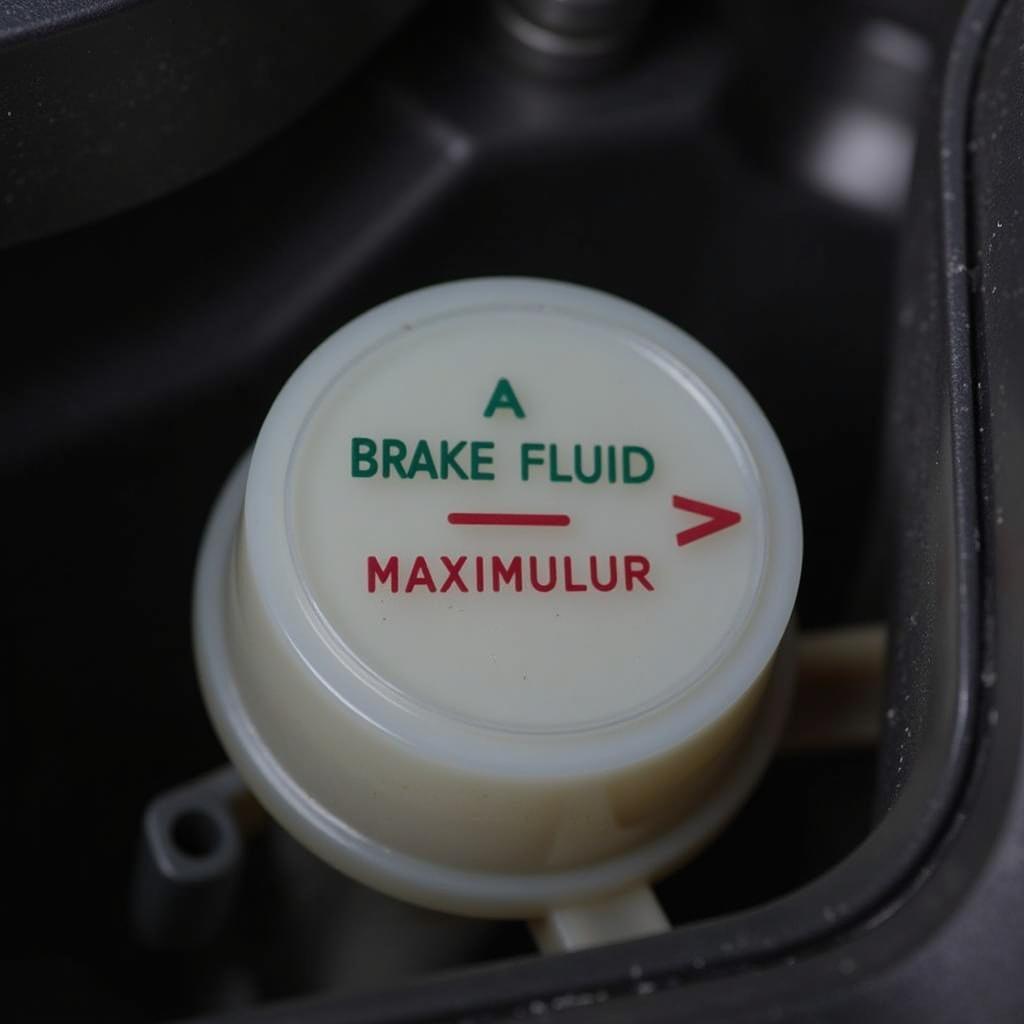The infamous random brake warning light on a 2001 Saab 9-3 can be a frustrating mystery. One minute you’re enjoying the open road, the next you’re greeted by a glowing orange beacon of uncertainty on your dashboard. This issue can stem from a variety of culprits, ranging from minor sensor glitches to more serious hydraulic concerns. This comprehensive guide will delve into the common causes of this issue, equipping you with the knowledge to diagnose and potentially resolve the problem yourself.
Understanding the Brake Warning Light System
Before we dive into the specifics of your 2001 Saab 9-3, it’s crucial to understand how the brake warning light system works in general. The system is designed to alert you of potential issues within your braking system and prompt you to take action. While a glowing brake warning light doesn’t necessarily mean imminent brake failure, it should never be ignored.
Here’s what your 2001 Saab 9-3’s brake warning light could be signaling:
- Low Brake Fluid: This is one of the most common reasons for the warning light to illuminate.
- Faulty Brake Light Switch: This switch is responsible for activating your brake lights when you press the pedal. A malfunctioning switch can confuse the system, triggering the warning light.
- Worn Brake Pads: Most modern vehicles, including your Saab 9-3, are equipped with brake pad wear sensors. These sensors trigger the warning light when the brake pads wear down to a certain point, indicating it’s time for replacement.
- ABS System Malfunction: If there’s an issue with your Anti-lock Braking System (ABS), the warning light might illuminate. This usually indicates a problem with the ABS module, wheel speed sensors, or related wiring.
Common Causes for the 2001 Saab 9-3
While the general causes mentioned above apply to most vehicles, some issues are more prevalent in the 2001 Saab 9-3:
- Vacuum Pump Failure: A common culprit specific to the 2001 Saab 9-3 is a failing vacuum pump. The vacuum pump plays a crucial role in providing the necessary vacuum assist for your brakes.
- Brake Booster Issues: Closely related to the vacuum pump, the brake booster itself can also be a source of problems. If the booster diaphragm fails, it can lead to a loss of brake assist and trigger the warning light.
- Electrical Gremlins: Like many vehicles of its era, the 2001 Saab 9-3 can sometimes fall victim to electrical gremlins. Corroded connectors, frayed wiring, or even a faulty ground connection can disrupt the brake warning light system.
Troubleshooting the Random Brake Warning Light
Before attempting any repairs yourself, it’s crucial to emphasize that working on your car’s braking system can be dangerous if you’re not experienced. If you’re unsure about any step, it’s always best to consult with a qualified mechanic.
1. Check the Brake Fluid Level:
This is the easiest and most important step. Locate the brake fluid reservoir (usually a translucent plastic container near the firewall) and check the fluid level. If it’s low, add the correct type of DOT 3 or DOT 4 brake fluid as specified in your owner’s manual.
2. Inspect the Brake Pads:
Even if your brake fluid level is fine, worn brake pads can trigger the warning light. Take a look at your brake pads through the spaces between the wheel spokes. If they appear thin (less than 1/4 inch of friction material remaining), it’s time for a replacement.
3. Examine the Brake Light Switch:
This switch is located above the brake pedal arm. Check if the switch is properly adjusted and not sticking. You can often test its functionality by pressing and releasing the brake pedal while observing if the brake lights illuminate consistently.
4. Consider the Vacuum System:
Given the prevalence of vacuum-related issues in the 2001 Saab 9-3, pay close attention to the vacuum system. Start by checking the vacuum lines connected to the brake booster for any cracks, leaks, or loose connections.
5. Scan for Trouble Codes:
If the warning light remains illuminated despite checking the basics, it’s time to read the Diagnostic Trouble Codes (DTCs) stored in your car’s computer. You can do this yourself with an affordable OBD-II scanner or take your car to a mechanic for diagnosis.
Remote Diagnostic Solutions: The Future of Car Repair
Advancements in automotive technology have paved the way for innovative solutions like remote diagnostics and software programming. Imagine this: instead of spending hours troubleshooting a random brake warning light, you could have a qualified technician diagnose the issue remotely, often pinpointing the problem with remarkable accuracy.
 Remote Diagnostics and Software Programming for a 2001 Saab 9-3
Remote Diagnostics and Software Programming for a 2001 Saab 9-3
Conclusion
A randomly illuminated brake warning light in your 2001 Saab 9-3 should never be ignored. By understanding the common causes and following the troubleshooting steps outlined in this guide, you can take the first step toward addressing the issue. Remember, safety should always be your top priority. If you’re unsure about any aspect of diagnosing or repairing your car’s braking system, consult a qualified mechanic for assistance.

